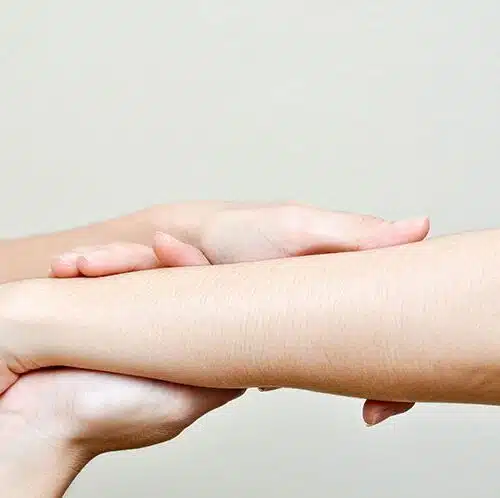Insomnia and Medical Marijuana
Insomnia is A sleep disorder characterized by difficulty falling asleep and/or remaining asleep for an adequate period of time. Studies show that most adults require 7-8 hours of sleep per day for optimal functioning. Sufferers of insomnia typically awaken to a feeling fatigue and tiredness, which translates into difficulty in approaching daily life activities. Attempts to sleep often feature bouts with restlessness and agitation, which can lead to a multitude of emotional difficulties throughout the day. It is believed that 40% of individuals suffering with insomnia also suffer from depression.
Insomnia may be characterized based on its duration. Acute insomnia is brief and often happens because of life circumstances (for example, when you can’t fall asleep the night before an exam, or after receiving stressful or bad news). Many people may have experienced this type of passing sleep disruption, and it tends to resolve without any treatment.
Chronic insomnia is disrupted sleep that occurs at least three nights per week and lasts at least three months. Chronic insomnia disorders can have many causes. Changes in the environment, unhealthy sleep habits, shift work, other clinical disorders, and certain medications could lead to a long-term pattern of insufficient sleep. People with chronic insomnia may benefit from some form of treatmen t to help them get back to healthy sleep patterns. Chronic insomnia can be comorbid, meaning it is linked to another medical or psychiatric issue, although sometimes it’s difficult to understand this cause and effect relationship.
Traditional Treatment
A multitude of pharmaceutical options are used to treat insomnia, including Ambien, Sonata and Lunestra. There is a high rate of dependency associated with these drugs, therefor most doctors do not recommend their use for more than a few weeks at a time. Behavior therapies and relaxation techniques are also commonly used to combat insomnia.
Insomnia and Medical Marijuana
Cannabinoid treatment of insomnia has proven successful through the administration of cannabis high in THC. Studies have shown the administration of 20 mg of THC to be successful, while 30 mg of THC to be less effective, suggesting their is an optimal dose for proper interaction of the endocannabinoid and phytocannabinoid systems.
Difference between CBD and THC in Medical Marijuana
THC, or tetrahydrocannabinol, is the chemical responsible for most of marijuana’s psychological effects. It acts much like the cannabinoid chemicals made naturally by the body, according to the National Institute on Drug Abuse (NIDA).
Cannabinoid receptors are concentrated in certain areas of the brain associated with thinking, memory, pleasure, coordination and time perception. THC attaches to these receptors and activates them and affects a person’s memory, pleasure, movements, thinking, concentration, coordination, and sensory and time perception, according to NIDA.
THC is one of many compounds found in the resin secreted by glands of the marijuana plant. More of these glands are found around the reproductive organs of the plant than on any other area of the plant. Other compounds unique to marijuana, called cannabinoids, are present in this resin. One cannabinoid, CBD is nonpsychoactive, according to the National Center for Biotechnology Information, and actually blocks the high associated with THC.
Cannabidiol or CBD, is the cannabis compound that has significant medical benefits, but does not make people feel “stoned” and can actually counteract the psychoactivity of THC. CBD does not cause a high, unlike THC. The reason why CBD is non-psychoactive is due to its lack of affinity for CB1 receptors. CB1 receptors are found in high concentrations in the brain, and are the pathways responsible for the psychoactive effects of THC.
CBD and THC levels tend to vary between different strains and varieties of cannabis. By using selective breeding techniques, we have managed to create varieties with high levels of CBD and THC.
Endocannibinoid System
The endocannabinoid system is a central regulatory system that affects a wide range of biological processes. It consists of a group of molecules known as cannabinoids as well as the cannabinoid receptors that they bind to.
Although marijuana is a source of over 60 cannabinoids (including THC and CBD), the human body produces a number of cannabinoids as well.
Decades of scientific research on the endocannabinoid system has resulted in the discovery of two types of cannabinoid receptors, CB1 and CB2. These receptors are found in various parts of the body, but are most prominent in the brain and immune system.
Cannabinoid receptors act as binding sites for endogenous cannabinoids as well as cannabinoids found in marijuana. When cannabinoids bind to CB1 or CB2 receptors, they act to change the way the body functions.
Cannabinoid receptors continue to be identified in unique parts of the body as research on the endocannabinoid system.
How to Medicate
Voluminous anecdotal evidence exists showing patient success in both smoking and vaporizing cannabis, as well as the oral ingestion of cannabis edibles and extracts.
Vaporizing or Vaping
If you don’t like the idea of smoke there is the option to vaporize. Vaporization does not use combustion to heat the medicine. Unfortunately there is some confusion out there about vaporizers. There are now hundreds of vaporizers to choose from. There are three basic types: pen, hand-help, and tabletop. The differences are in price, portability and size. Some vaporizers claim to be able to vaporize plant matter (flowers), wax and oils. Some can only do concentrates, some only oil. The most important difference is the method used to heat the medicine. There are basically two methods (with hybrids on the way)- conduction and convection.
True Vaporizing is done by convection, where air is heated, and in turn the hot air turns the medicine a to vapor which is then inhaled. Conduction Vaporizing happens when a hot element (metal plate, or bowl) touches the medicine. The medicine is placed directly in a metal or ceramic bowl or chamber that is heated which then heats the medicine and the smoke is inhaled. This is still combustion, and not truly vaporizing. This is closer to dabbing but with a much cooler heating element.
Smoking
The benefit from smoking as a route of administration is instant action and the ability of the patient to self titrate the dose needed for relief.
What’s Best for my Lungs?
The cleanest method to inhale medicine is true or convective vaporizing. It is better for your lungs since there is no burning or combustion.
Edibles
Edibles provide ways to eat or drink your medicine. Many medicated edibles and even bottled drinks are readily available at dispensaries. Be aware that most of the edibles at dispensaries are loaded with sugar and carbs. But basically what the edibles and drinks all contain are canna butter and/or canna oil. You can purchase these or easily make them at home to add to your own baked goods, snacks or even meals (especially if you are avoiding sugar or gluten).
Tinctures
Tinctures are not new. Until cannabis was banned in 1937, tinctures were the primary type of cannabis medicines. Tinctures are essentially alcohol extractions of whole cannabis (usually the flowers and trim leaves).
The best way to use tinctures is sublingually (under the tongue). Titration or dose control is easily achieved by the number of drops a patient places under the tongue where the medicine is rapidly absorbed into the arterial system and is quickly transported to the brain and body. All a patient need do with tincture is use a few drops, wait for the desired medical effects, and either use more or stop as the situation indicates. Tinctures can be flavored for better taste.
Patient Story
Little clinical research exists studying the specific effect of cannabis on insomnia. However, many patients report using cannabis to treat their insomnia as related to other conditions, including psychological disorders such as PTSD.
Dr. Rolando Tringale and Dr. Claudia Jensen noted in the 2011 study titled Cannabis and Insomnia, that the cannabis(+) and placebo groups
“Did not statistically differ in characteristics except for their ingestion of cannabis orally and in their total cannabis ingested per week. We noted a significant decrease in reported time to sleep after the use of cannabis in both those with and those without reported sleep difficulties. In terms of the secondary outcome, we saw a statistically significant difference in time it took to fall asleep between both groups. The study concluded, Patients seeking physician approval to use cannabis commonly report benefits on decreasing sleep latency, even if a sleep disorder is not the chief complaint. This previously unreported result is supported by recent findings concerning the endocannabinoid system, as well as voluminous anecdotal evidence.”
Many patients report that when compared to conventional sleep medications, medical cannabis works better, is not habit-forming, and leaves them feeling better the next day.


